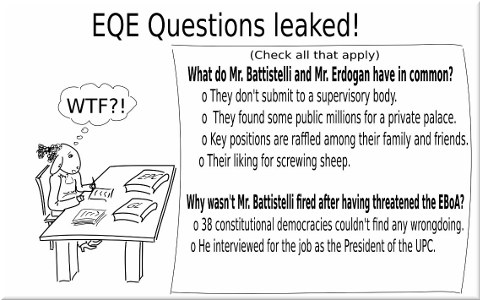
The G Summary Eqe Tools Of The Trade
Back to Summary. Tools of the Trade. By MOTOR Editors. Manufacturers' newly introduced tools, equipment, parts and services that help shop owners run their business more profitably and allow technicians to diagnose and fix vehicles quicker and more accurately. Crimping Kit.
Preparation -: the addition of 30 minutes to each Main Exam paper has moved things around (the A-paper starts 30 minutes earlier!) - Read through the rules regarding the conduct of the exam. See the warning about possible problems. - See about the location where you are taking the exam - Be well rested in the days before the exam - many D candidates sleep badly on the Monday night - Take a suitcase with wheels, and limit the books to ones you have used in the last 6 months of your preparation - After doing the papers of 2016, look at the to help with interpreting the EQE Compendium - source: - If necessary, look at for reducing anxiety at the exam - Be prepared to do the exams with a relatively small (possible as small as 60cm x 90cm) space. Normally, you can place books you don't need under the table.
- Look through the for other tips General - Photo identification (Passport or drivers license) - several black or blue pens (we hear that gel-pens are preferred, but they can run out quickly) - no electronic devices: only a wrist watch with an analogue display (and without any additional options) is allowed on your desk during the exam. See the warning about possible problems. - make arrangements to leave your phone & laptops at home or in your hotel or in a train station locker. See the warning about possible problems.
Rocking motion, established in either the superstructure in the form of a 2‐point stepping mechanism (structural rocking) or resulting from rotational motion of the foundation on the soil (foundation rocking), is considered an effective, low‐cost base isolation technique. This paper unifies for the first time the 2 types of rocking motion under a common experimental campaign, so that on the one hand, structural rocking can be examined under the influence of soil and on the other, foundation rocking can be examined under the influence of a linear elastic superstructure. Two building models, designed to rock above or below their foundation level so that they can reproduce structural and foundation rocking respectively, were tested side by side in a centrifuge. The models were placed on a dry sandbed and subjected to a sequence of earthquake motions. The range of rocking amplitude that is required for base isolation was quantified.

Overall, it is shown that the relative density of sand does not influence structural rocking, while for foundation rocking, the change from dense to loose sand can affect the time‐frequency response significantly and lead to a more predictable behaviour. 1 INTRODUCTION Following the aftermath of the New Zealand earthquakes (2011), it has become clear that buildings should be designed to be easily repaired after a seismic event, so that disruption is minimised. Cwcheat cheatpopsdb download torrent. At the same time, the recent earthquake events in Chile and Mexico caused a detrimental loss of building and infrastructure stock.